by Elisa Zied | Oct 23, 2021 | books, fiction, writer, writers, writing, young adult books
If you’re looking for an immersive, beautiful and expansive story about friendship (with romance), Laura Taylor Namey’s third novel, When We Were Them (Atheneum Books for Young Readers, November 16, 2021), more than fits the bill. Told over the course of one week and laced with rich memories and moments between three friends, the story is sure to resonate with teens and adult readers alike who have experienced or aspired to have deep, meaningful relationships.
Here’s a description of the novel from Taylor Namey’s website:
When they were fifteen, Willa, Luz, and Britton had a friendship that was everything.
When they were sixteen, they stood by one another no matter what.
When they were seventeen, they went through the worst.
And when they were eighteen, Willa ruined it all.
I had the pleasure of doing a Q & A with Taylor Namey, an author I’m also proud to call a friend since we met years ago at the SCBWI annual conference in Los Angeles. Here are the highlights from our email exchange.
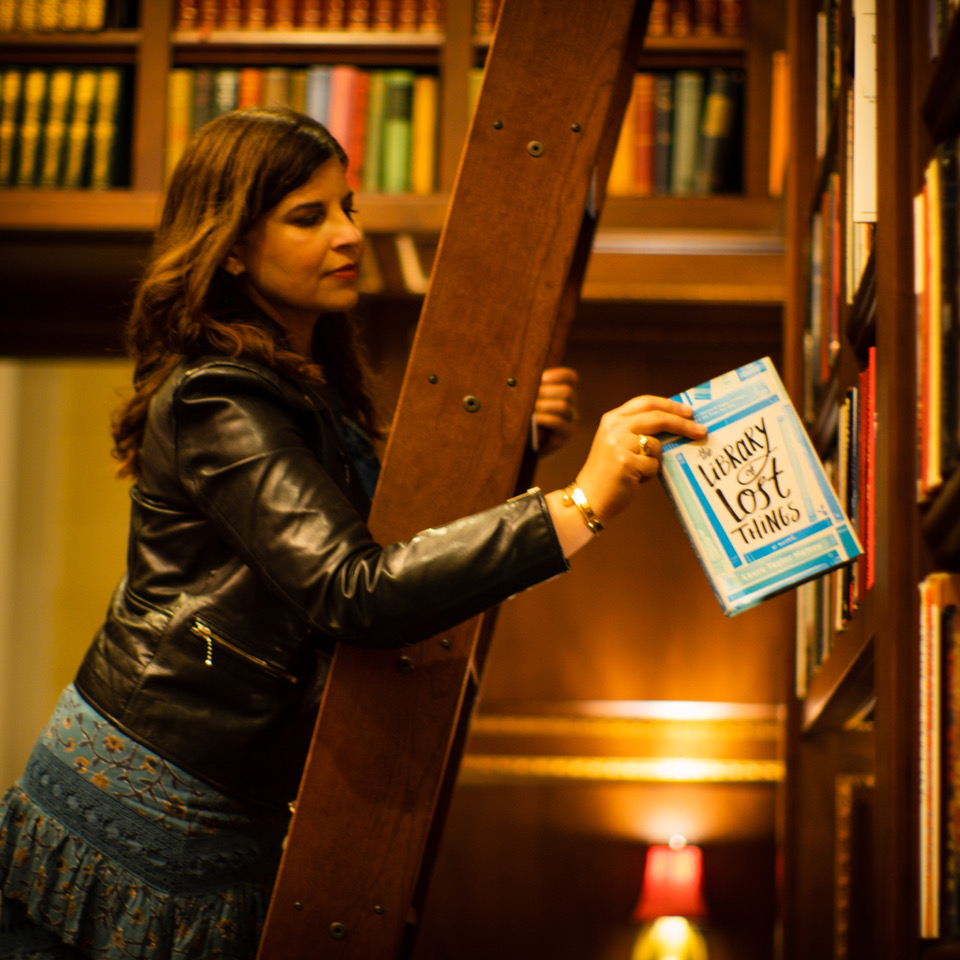 In what ways has your writing process and daily practice changed since writing your debut novel, The Library of Lost Things?
In what ways has your writing process and daily practice changed since writing your debut novel, The Library of Lost Things?
Now that my children are older, I definitely have more time to work in longer chunks, but my workload has increased ten-fold. I think what has changed the most is having to adapt to various seasons. My day looks much different when I’m actively drafting to other times when I’m focusing mainly on promotion or editing. My new motto is a combination of a day-by-day mentality as well as completing new tasks as quickly as I can, so they don’t pile up.
What was the spark for your latest novel, When We Were Them, and what made you want to explore female friendship?
After writing two coming of age YA novels with heavy romance subplots, I wanted to stretch my wings a little and try something different. WHEN WE WERE THEM is my most complex work to date, but I felt ready for a challenge. Having a brilliant editor who knew how to push and bring out my best made all the difference.
While A Cuban Girl’s Guide to Tea and Tomorrow is a tribute to my Cuban family, WHEN WE WERE THEM is an ode to my California beach girl childhood. I set the novel in the small community where I grew up. As a teen, my female friends and those relationships were so crucial to my identity and development. I wanted to celebrate a ride or die friendship between three teen girls, but also explore the way grief and loss and growing up can affect relationship, as well as the fallout that ensues when one girl leans too hard on the others. The novel asks the question, is everything they were strong enough to survive everything they’ve become?
While all of WWWT comes from you, which specific parts of which characters are most like or drawn from your family and friendships (childhood and/or current)?
These three characters and their friendship contain bits of me, in contrast to the character of Lila Reyes from A Cuban Girl’s Guide to Tea and Tomorrow. She embodies most me as a teen. Future opera star Britton shares my love of music, and Luz’s obsession with the heart and the human body and medicine is a tribute to my father who passed away from heart disease. Willa’s surfer girl and ocean loving spirit comes right from my childhood. I grew up on the beach featured on the cover.
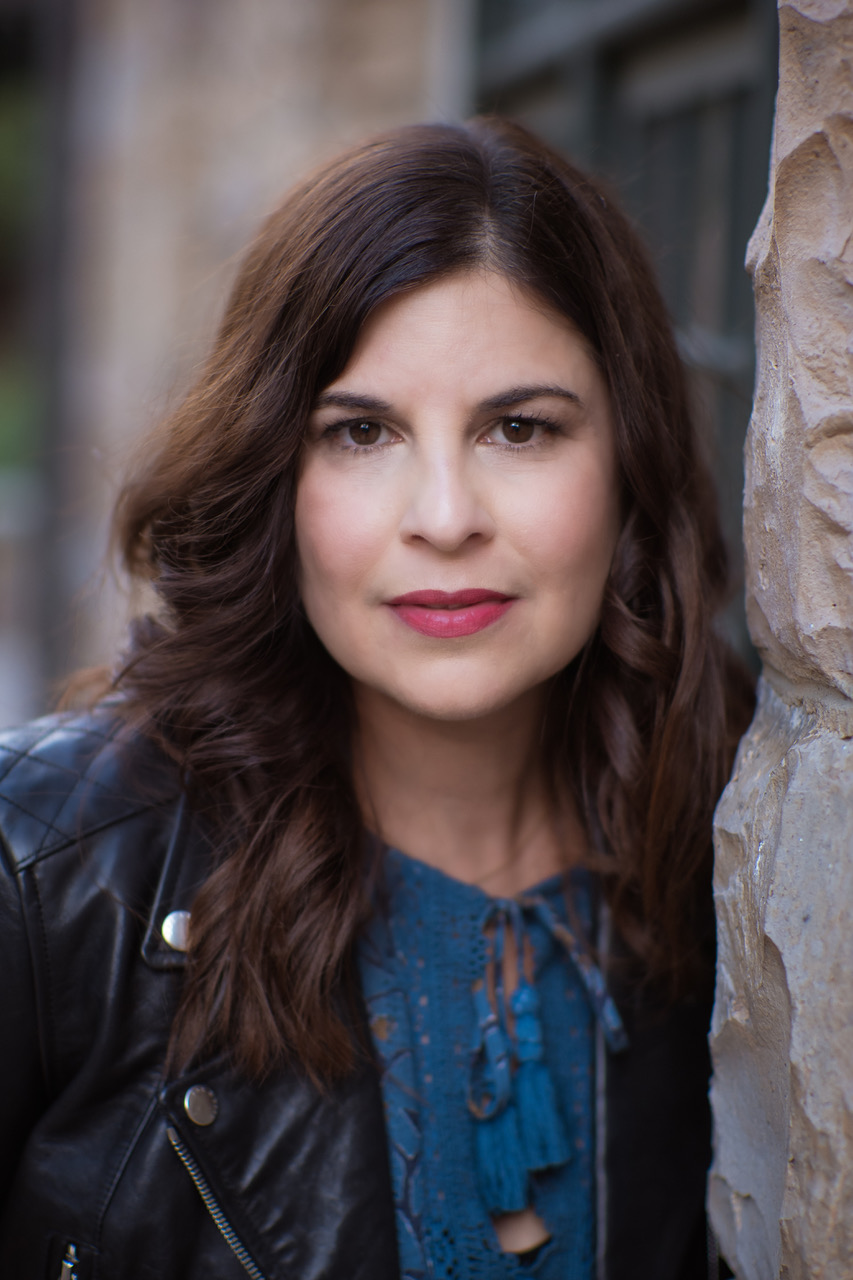 You dive deep into the ocean (pun intended), medicine, opera, becoming a Navy SEAL, and so much more in your novel. What did you know about each of these ahead of time, and what kind of research did you have to do before/while writing WWWT?
You dive deep into the ocean (pun intended), medicine, opera, becoming a Navy SEAL, and so much more in your novel. What did you know about each of these ahead of time, and what kind of research did you have to do before/while writing WWWT?
I knew very little about each of these aspects of my book, beyond surface level, before I started researching. Growing up in San Diego, I was familiar with Navy SEALs, used to live next door to a former SEAL. But it took interviews with active military personnel and a lot of reading to educate myself well enough to be able to include this experience in my story. The rest just took time and study, and a lot of YouTube watching. I particularly enjoyed watching hours of opera masterclasses and teaching sessions filmed at universities. Opera is such a gorgeous art form and it was a privilege to include a bit of this rep in my story.
You seem to be a master of juggling book drafting and revision as well as book promotion. What’s your typical schedule (or secret)?
Thank you! When I’m in a drafting or promotion season, or lately, both at once, I work between eight and ten hours a day. I draft in short 45-minute increments, spending the last fifteen minutes of every hour answering emails, prepping material for workshops, or maintaining my social media accounts. After dinner, I’m usually reading or working on my critique partners’ work. I’ve tried to be better about taking weekends off, but the month before a new book comes out, I typically have to spend a few weekend hours catching up. Despite the long hours, there is nothing I’d rather be doing.
Anyone who knows you knows how connected you are to your two critique partners. How has that relationship evolved and grown as you’ve all moved from pre-published writers to agented and/or published authors?
Now that the three of us have worked on multiple projects over the last three and a half years, I feel we’re better equipped to provide support, developmental feedback, and pinpoint editing within our workspace. We are the best of friends and mutual cheerleaders, and we trust each other implicitly. I am so lucky to have them.
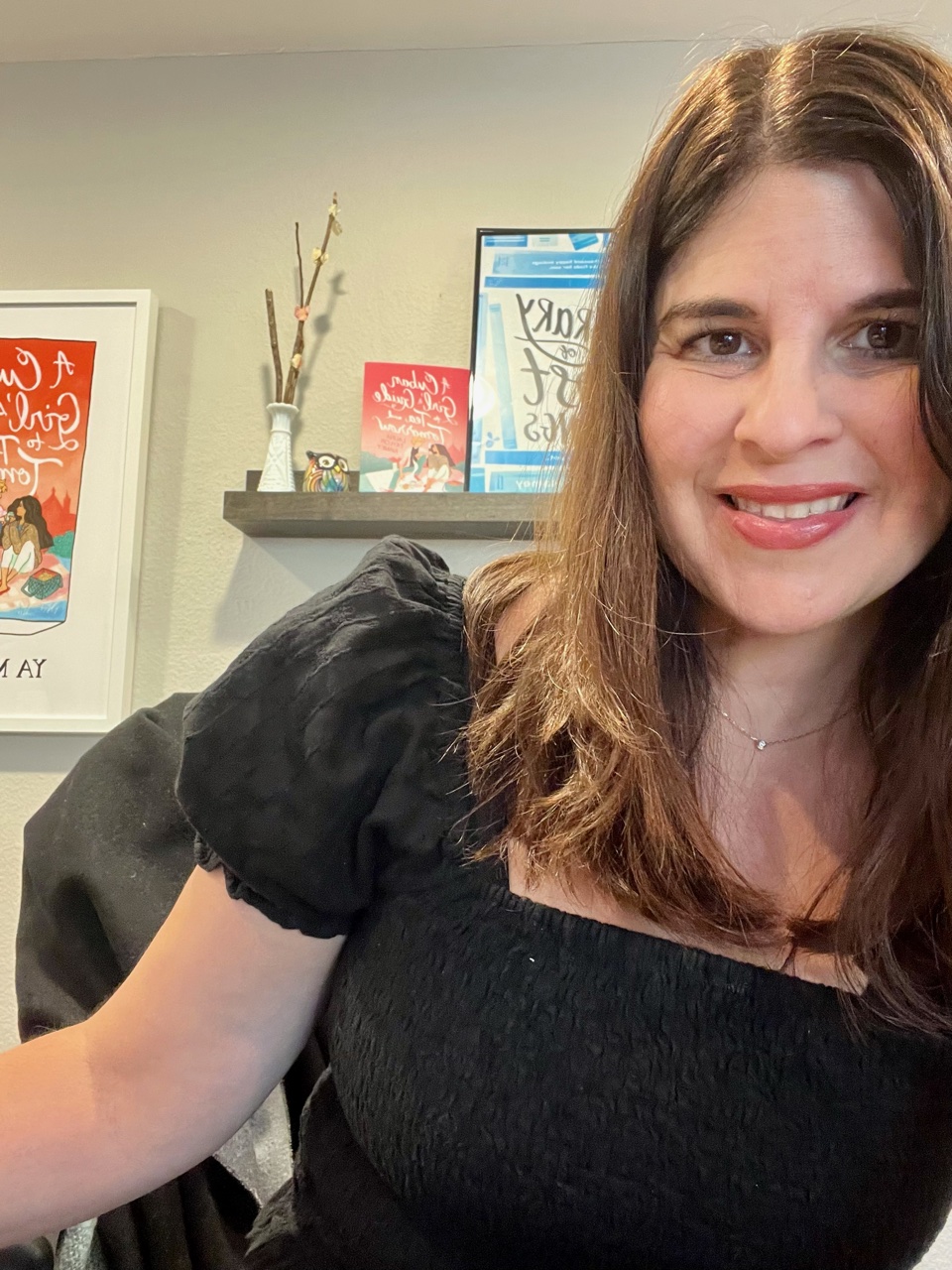 What was the best part about having your sophomore novel, A Cuban Girl’s Guide to Tea and Tomorrow, become a Reese’s YA Book Club pick—and a New York Times bestseller?
What was the best part about having your sophomore novel, A Cuban Girl’s Guide to Tea and Tomorrow, become a Reese’s YA Book Club pick—and a New York Times bestseller?
Being chosen for Reese’s Book Club has truly been one of the highlights of my career. The entire team is wonderful and so supportive, and the club works like a big family. I love being able to share my book across a wider platform and audience.
What has been the most challenging aspect of publishing three books in two years? And what have you learned about yourself as a writer (and a person) during that time?
Having to juggle multiple projects at once has been hard. Setting aside a draft to work on another book that might be in a different stage can be tricky. Now, I’m used to it. I’ve learned that I have a unique process that works for me and my writing style. And I’ve learned how much I truly love this job. The work is hard and long and taxing at times, but it is the only work I want to be doing.
What are some tips you have for aspiring writers to help them find ideas/inspiration for stories they’re meant to tell?
The world and the people you meet simply by living your life can provide so much inspiration. I’m also a fan of combining story ideas. The memory of a high school friend, plus a sparkling event three years ago, plus a curious letter or single line overheard at a café can be combined to create a thrilling new story. Also, ideas breed other ideas if you give them space. Jotting notes about story tidbits can unleash your creativity and many times, your mind will expand the scope of a few loose ideas into a novel worthy premise and a compelling tale.
Please share a favorite prompt or two for writers to help them get started on a new idea, or to get to know their characters better (especially those like me who are doing Nanowrimo in November).
My favorite exercise to get to know my character better is a long check list that I fiddle with before I start my book. Here is an abridged version. You should be able to answer these questions in your character’s voice.
I want most to:
I could have that except:
I am thrilled by:
I am inspired by:
I am terrified by:
I am disgusted by:
I’m most centered when:
I’m most anxious when:
My personal style looks like:
Not counting my pets, or family members, if I could only save three objects in a fire, I’d choose:
What are some of your favorite recent reads, TV shows, films or songs/albums?
Some recent favorite reads are You’d Be Home Now by Kathleen Glasgow, People We Meet on Vacation by Emily Henry, and Our Way Back to Always by Nina Moreno.
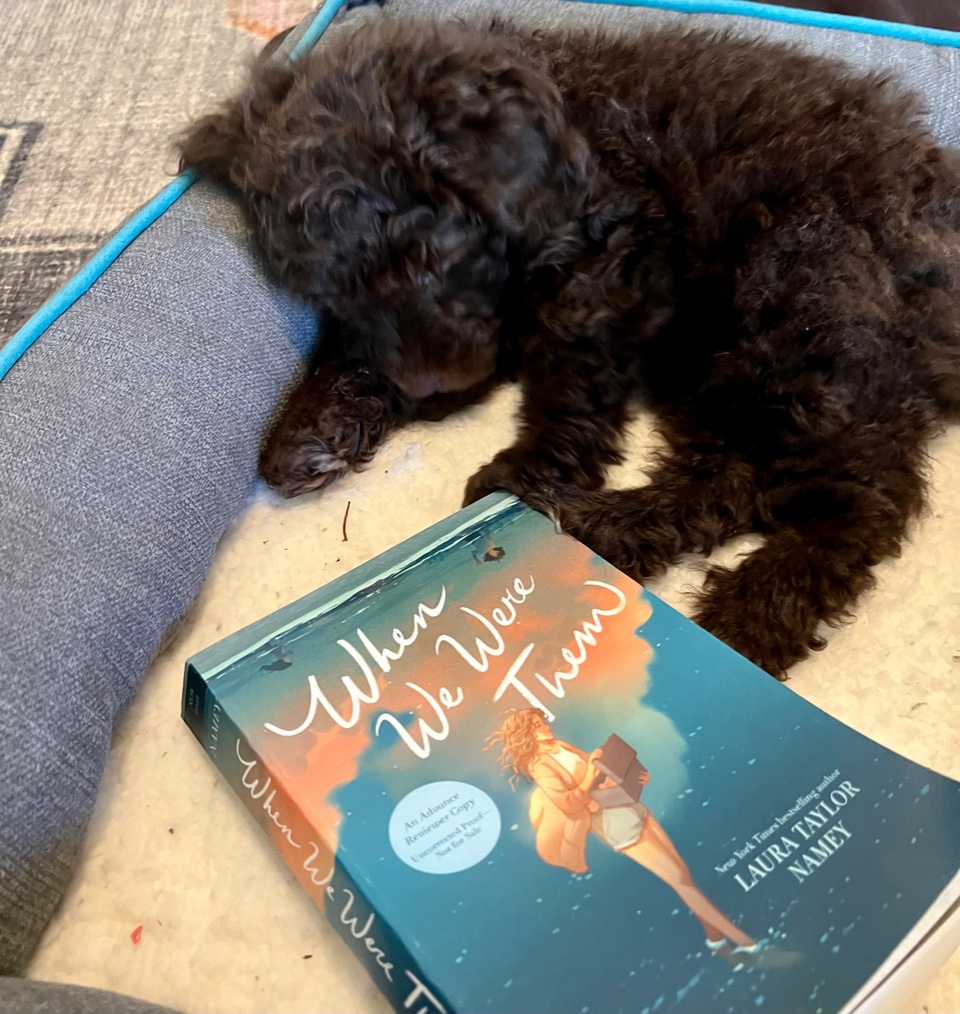
Professor Henry Higgins (aka Henry) is a big fan of his mother’s new novel!
Laura Taylor Namey is the New York Times bestselling author of Reese’s Book Club pick A Cuban Girl’s Guide to Tea and Tomorrow, The Library of Lost Things, and When We Were Them. A proud Cuban-American, she can be found hunting for vintage treasures and wishing she was in London or Paris. She lives in San Diego with her husband and two children. To learn more about Taylor Namey and all her work, visit her website here. You can order her books wherever books are sold, and check out her preorder campaign with Mysterious Galaxy Books in San Diego here.
by Elisa Zied | Sep 25, 2021 | books, fiction, writer, writers, writing, young adult books
You’d Be Home Now (Delacorte Press, September 28, 2021) is already a STAR. Kirkus calls the latest novel by bestselling author Kathleen Glasgow “A gut-wrenching look at how addiction affects a family and a town,” and “Necessary, important, honest, loving, and true.” Also praised by Booklist, and School Library Journal, this fantastic find according to Shondaland is at the top of my TBR list. I devoured Glasgow’s first two novels, Girl in Pieces and How to Make Friends with the Dark, and am especially excited for her latest work (which, for better or worse, makes me think of my own childhood). I have no doubt it will resonate with young adults and not so young readers alike. Here’s a brief description of You’d Be Home Now:
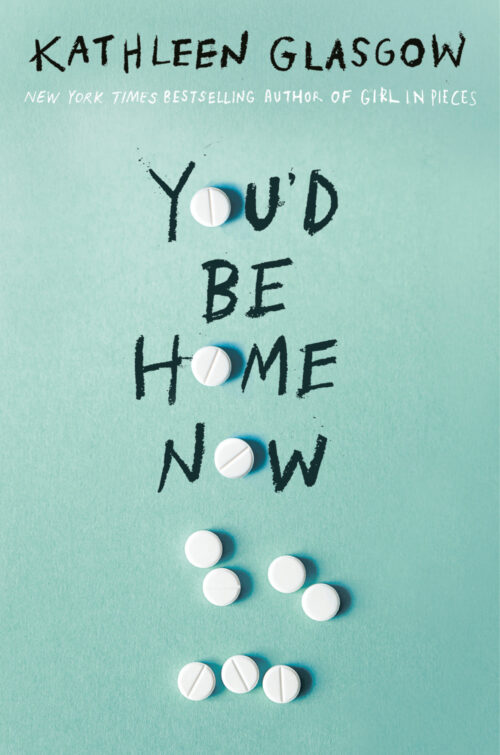 No one knew just how bad Joey Ward’s addiction was until the night Candy MontClaire died. Four months later, he’s back from rehab, hoping for a fresh start in a town that doesn’t know how to forgive. His sister, Emory, is tasked as his keeper. Because in a family with a “beautiful one” (her glamorous and outgoing older sister Maddie) and a “bad one” (Joey), Emmy has always been “the good one.” Of course she’ll keep her brother safe. She loves Joey more than anything. She’ll do anything to keep him alive.
No one knew just how bad Joey Ward’s addiction was until the night Candy MontClaire died. Four months later, he’s back from rehab, hoping for a fresh start in a town that doesn’t know how to forgive. His sister, Emory, is tasked as his keeper. Because in a family with a “beautiful one” (her glamorous and outgoing older sister Maddie) and a “bad one” (Joey), Emmy has always been “the good one.” Of course she’ll keep her brother safe. She loves Joey more than anything. She’ll do anything to keep him alive.
But what if love isn’t enough to save someone?
Glasgow was kind enough to do an email Q & A for my blog. Read on to learn more about her latest novel and her writing life.
What was the spark for You’d Be Home Now? And did you know from the get-go you wanted—or had to—write about a teen girl tasked with picking up the pieces after her brother’s drug addiction?
You’d Be Home Now was inspired by Thornton Wilder’s classic play, Our Town. It’s a loose reimagining of Grover’s Corners and what a town like that might be like today. If Wilder wrote the play today, I have no doubt the opioid crisis would be part of the plot, as this epidemic has ravaged families, towns, and communities. I chose to write the book from Emmy’s POV because there’s collateral damage in addiction: families, particularly siblings, who often become overlooked, overwhelmed, and exhausted in the face of a sibling’s addiction. The impact of addiction touches everyone in a family and really does a number on their mental health. They deserve a story, too.
I’m intrigued by the idea of examining who we are and what role we play within our families and our communities, and how that impacts our relationships and self-perception. I, for example, have always been a rule-follower who sought others’ approval, and who was always considered to be ‘the good one.” My older brother who was frequently in trouble was deemed “the bad one.” (We’ve been estranged for more than 15 years, and obviously haven’t worked through those narratives—maybe someday?!) What made you want to explore this idea in your novel, and did you have any revelations (in general or about your own life) along the way?
Everyone, for better or for worse, gets slotted into a role in a family: “the good one,” “the troubled one,” “the beautiful one,” “the difficult one.” It’s endless. But it’s not who each kid is, it’s who they are being defined as, and that’s not fair to any of them, because it makes them suppress emotions and not feel comfortable moving out of the role they’ve been assigned, if that makes sense. In YOU’D BE HOME NOW, Emmy is “the good one.” Quiet, rule-follower, caretaker of Joey since she was very small. In essence, because of this role, she’s never really discovered who she really is, or what she really wants out of life, or even how to get it. She doesn’t have an identity she forged on her own; it was given to her by her family. And of course, she wants to help her brother. But at what cost? She also wants to live a life of small, normal joys, like having a boyfriend, or going to dance. Those things make her feel guilty, though, because how can she enjoy herself while her brother’s life is disintegrating? I tried to be very careful in the book about Emmy’s journey with Joey, because she’s at the very beginning of this struggle with Joey, and many people (especially older readers) have reached a sort of end with the Joeys in their lives: they can no longer give all they’ve got; they’re exhausted. And that is valid! The question is learning to set your boundaries: what you can do, what you can’t do, because in the end, you also have to take care of yourself. It’s Emmy’s struggle in the book to realize this. I wanted to show the process of taking care of yourself, too. And to stop assigning people roles that don’t actually define who they are.
How was the process of writing this third novel different from that for Girl in Pieces, and How to Make Friends with the Dark?
Well, it was very hard to write with Thornton Wilder in the room! But I eventually overcame that, because the story became its own. I would say writing this book was different because Girl in Pieces and How to Make Friends with the Dark are pure emotion—Charlie and Tiger’s POVs are very interior and heavy. I needed to make Emmy’s narrative somewhat less intense than my other books to stretch the story beyond Emmy and into the town and the school to show how the tentacles of addiction ensnare everyone, not just the person struggling with addiction. An Instagram poster in the book called Mis_Educated is a character in the book and through their posts, a reader also gets a chance to hear from kids in the town of Mill Haven (in the comment section) about what’s really happening and how they feel about their lives.
How has the pandemic changed your writing life in terms of practices and inspiration?
I don’t know if the pandemic has changed my writing practice or inspiration so much as it has changed me, slowly, over time. I’m already an introvert and being even more isolated during the pandemic led me back into a deep depression. I wasn’t writing at all for several months, actually, until a joke between me and fellow author Liz Lawson (The Lucky Ones) turned into . . . a book. I needed something fun and different, I needed something to look forward to every day, and so did Liz, and those Twitter DMs between us eventually turned into a mystery called The Agathas, which comes out May 2022. Writing that book quietly with Liz, with no one watching (we didn’t tell our agents for a long time), really lifted me to a better place. And it’s a different tone of book for us, as both Liz and I tend toward heavier topics. We kept everything speedy, and fun, and about friendship (two teen girls become unlikely detectives and even more unlikely, become friends) and it was really a balm for me.
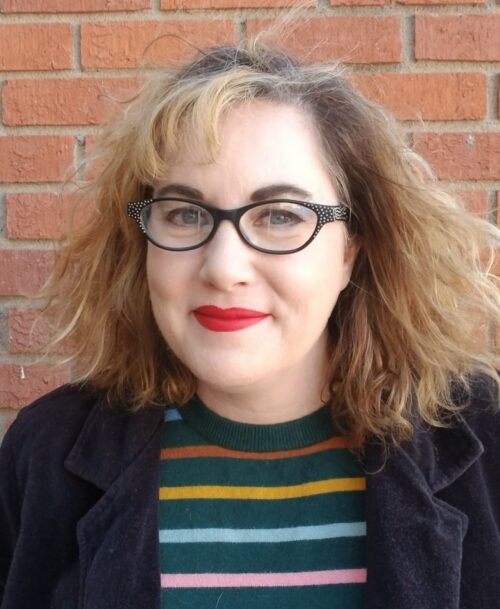 What has been the most rewarding part of being a young adult novelist? What has been the most challenging part?
What has been the most rewarding part of being a young adult novelist? What has been the most challenging part?
It’s rewarding in the sense that I hear every day from readers who have discovered Girl in Pieces and How to Make Friends with the Dark that those books have touched them deeply. I can’t really articulate what it means to know your book has impacted someone’s life in a deep and meaningful way. It makes me want to cry, actually! I’m grateful for that interaction. Writing is often hard and lonely, and sometimes you just don’t know if the story will land, especially with teens. I would say a challenging part is trying to do my best by teen readers and to articulate the adolescent experience in an authentic and believable way. And to give them a good and satisfying story to read.
What advice (in terms of craft or process) do you have for writers just starting out?
I don’t know if I’m an expert on anything having to do with writing, actually! I just try and write when I can, when a story keeps nudging me and won’t quit. I think in practical terms of craft, reading widely and often is the best teacher. You can learn from re-reading books you love: how the author structured this, how they handled that, how they went from A to B. I will say that you’ll learn what works for you in the beginning and then as you continue to write, you’ll improve through practice. I think the hardest thing for beginning writers is how to start. Like, literally, how to find time to sit in a chair (or couch, or bed, or coffee shop) and . . . get those first few words down. There’s a real fear: who am I to call myself a writer? Well, if you write, you’re a writer! And there’s a fear of: what if this isn’t any good? My answer to that is: what is good? One person might like your story, one might not. You can’t control that. But the most important thing to remember is, those things are abstract in the beginning: if you don’t sit down and write that story, no one will be able to read it. And believe me, someone wants to! Of that, I’m sure. We writers have a hard time getting out of our own way! We can imagine a million things might happen after we write a story and send it into the world, but if we don’t write it first, we will never know if any of those million things come to fruition.
What books, TV shows, and music have you most enjoyed during the pandemic (and more recently)?
I tend to have the television on in the background when I write and I wrote the entirety of You’d Be Home Now with Grey’s Anatomy on an endless loop. The shows I watched in the past two and half years when I WASN’T writing include (and I’m sorry on some of these because often it takes me years to watch a show everyone watched fifteen years ago): Game of Thrones, Mad Men, The Wilds, The Sopranos (could not finish, too many dream sequences), The Wire, 30 Rock, The Crown, Breaking Bad, Big Mouth, Forensic Files, Cold Cases, PEN15, Broadchurch. Some of my favorite books to read this past year were: The Lucky Ones (Liz Lawson); Never Saw You Coming (Erin Hahn); Something Happened to Ali Greenleaf (Hayley Krischer); When We Were Strangers (Alex Richards); That Weekend (Kara Thomas); The Project (Courtney Summers); Off the Record (Camryn Garrett). That’s just a small list. My music listening is all over the place, but lately I can’t stop listening to a song by Bright Eyes called “At the Bottom of Everything.” A weird thing about me is that while I don’t listen to music AS I write, I actually can’t start physically writing a book until I have everything in my head AND I have found the song that kind of drives the story, and “At the Bottom of Everything” is the song that drives what I hope will be my fifth book. (Girl in Pieces was “Kamera” by Wilco; How to Make Friends with the Dark was “Sign of the Times” by Harry Styles; You’d Be Home Now was “Let You Down,” by NF).
You’re a master storyteller, especially because you manage to inject hope into all of your stories no matter how raw, emotional, and painful they may have been to write or read. What’s one thing you’ve learned through your life and/or writing—especially during these especially challenging times—that has helped you persevere and continue to push through and make your art?
Honestly, I don’t know what else I would do if I couldn’t write. It’s all I’ve ever wanted to be, a writer. And stories are what keep us all going, right? When do we ever not need a good story?
About Kathleen Glasgow: She is the New York Times bestselling author of Girl in Pieces, How to Make Friends with the Dark, You’d Be Home Now, and the upcoming The Agathas (with Liz Lawson) (Delacorte, May 2022). She received her undergraduate degree from the University of New Mexico and her MFA from the University of Minnesota. She lives in Tucson, Arizona.
Check out my previous Q & A with Kathleen Glasgow for the launch of How to Make Friends in the Dark. And learn more about Glasgow and her work on her website. Her wonderful work is available wherever books are sold.
by Elisa Zied | Sep 12, 2021 | books, fiction, writer, writers
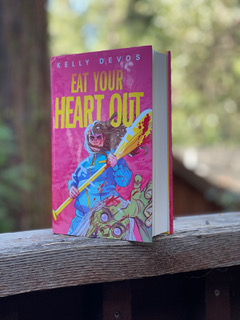 I’ve been following author Kelly DeVos’s career and enjoying her work and social media posts for years. I even had the pleasure of meeting the young adult writer at a pre-pandemic SCBWI conference in Los Angeles. Her latest novel, Eat Your Heart Out (Razorbill, June 2021), is smart, funny, satirical and original. Here’s a description of the novel, an Amazon Editor’s Pick in the Best Young Adult category:
I’ve been following author Kelly DeVos’s career and enjoying her work and social media posts for years. I even had the pleasure of meeting the young adult writer at a pre-pandemic SCBWI conference in Los Angeles. Her latest novel, Eat Your Heart Out (Razorbill, June 2021), is smart, funny, satirical and original. Here’s a description of the novel, an Amazon Editor’s Pick in the Best Young Adult category:
Eat Your Heart Out follows a group of six teenagers who are disgruntled at the prospect of being shipped off to a fancy fat camp during winter break. When they arrive at camp, they discover things are worse than they thought. The place is crawling with zombies. They may be the only six survivors and they have to both escape and figure out what’s really up with the mysterious pharmaceutical company running the camp.
I am thrilled to share this Q & A with deVos to celebrate her new novel as well as her timely and important work on body positivity, fat positivity and fat representation.
Your debut novel, Fat Girl on a Plane (Harlequin Teen, 2018), was written after an incident you experienced when you were about to board a flight. What happened, and how did it evolve into a young adult book?
Yes! I got the idea to write the book after I was asked to buy a second seat on a flight to Salt Lake City. Right around that time, I was contemplating giving my dream of becoming a published author another shot but I also happened to be working on setting up a photoshoot with Project Runway Season Four contestant, Keith Bryce. After leaving the show, Keith went on to set up a successful photography and wardrobe studio and I was headed there for a shoot.
I arrived at the Phoenix airport for my flight to Utah. The opening scene in my book was inspired pretty directly by what actually happened to me. I was told that I’d need to purchase a second seat. A lot of panicked questions raced through my mind. Could I afford the second seat? Did they even have one available? But most of all: Should I even go on the trip? For a moment, I couldn’t help but think that it would be less trouble and less humiliating to just stay home. I reminded myself that I had done a ton of work behind the scenes to make this shoot happen and I had as much right as anyone to be there. So, I got on the plane. But that experience was the genesis of my book. I kept wondering. Does fatphobia make us feel like we’re unworthy of pursuing our own dreams? I wanted to write not only about the way fat people are treated but also about how those negative experiences impact the choices that we make.
What inspired your subsequent novels (which include the duology Day Zero and Day One as well as Eat Your Heart Out)? How did your writing processes differ for each of these (and/or compared to your debut)?
After FAT GIRL came out, I was supposed to be working on another YA contemporary book, but I was having a lot of trouble. The 2016 election was in full swing. My awareness of a lot of issues had changed and, for me, the social and political climate, didn’t put me in a place where I was able to focus on upbeat writing. I wanted to change what I was doing. As I was changing to writing thrillers, I found I really liked that process quite a lot and I wanted to go more in that direction. I’ve always loved horror movies so I decided to lean into that genre and write EAT YOUR HEART OUT, which was such a blast to work on.
What is it about summer camp that made you want to write about it? What do you most remember about those days, and how did those experienced impact you as a person and a writer?
When I was growing up, we didn’t have a lot of money and I only got to go to summer camp once, but it was honestly the best experience ever. As a child, I was really scared of spiders. I still don’t like them now, but at that time I was absolutely terrified. The camp I went to had these pretty basic, VERY rustic, wooden cabins where six or eight kids could sleep on bunkbeds. The very first night I found an enormous spider in my bed and almost got hysterical.
They moved me into the cabins that they had for adults which were (to a ten-year-old) super luxurious. There was a private pool and a kitchen with free snacks and a queen size bed and air conditioning. It was fabulous. The other kids thought I was some kind of celebrity or something. I’d be out at camp during the day, doing arts and crafts and sitting by the campfire and then I’d go back to the fancy part and swim and snatch Oreos. I took a lot of inspiration from that experience into EAT YOUR HEART OUT. It was a camp setting for people who almost wanted to pretend to be camping rather than actually be roughing it.
You’ve written thoughtfully about body positivity in several publications, most notably The New York Times (May 2018). How has your thinking about it evolved since writing that article? And how does this translate into the messages you share (without being didactic of course) through your novels?
Body positivity, fat positivity and fat representation are all topics that are very near and dear to my heart. I continue to feel that there should be space for nuance in how we handle these issues, particularly in fiction. But I feel like what I have had to learn is that, as fat people, we’re not all in the same place in our journey to self-acceptance and self-love. So, I have tried to proceed with a lot more sensitivity to try to make sure that my material finds an audience who’s able to and interested in engaging with it. Using content warnings, describing the plot of my books very accurately and making sure that books that contain fatphobia (even just to condemn it) are marketed to prepared readers are things that I’ve gotten much more serious about.
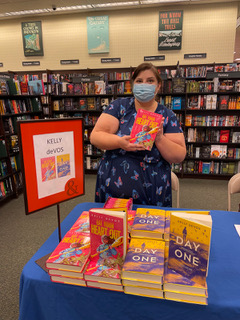 How has the pandemic impacted your writing, and how do you balance that with book promotion?
How has the pandemic impacted your writing, and how do you balance that with book promotion?
Possibly because I have been writing horror, I actually got quite a bit of writing done. Feelings of mortal terror have been coming quite naturally! During the pandemic, I’ve struggled with what, if anything, I could do to effectively promote my books. Many of the things I would have done in the past, like bookstore or library events, haven’t been paused due to COVID. In terms of balance, I try to prioritize writing. Beyond that, for promotion, I try to focus on things I enjoy. I mainly stay on social media channels I like and do things that are fun. That way, I am always satisfied with the use of my time.
What has been the best part of writing for young people?
Reading was so important to me growing up and I love the idea that my books are available for teen readers. I think the best part is getting to see my books find their way into the hands of teens and hope that they impact the readers’ lives in some way.
Any writing resources (books, podcasts, etc.) that you can’t live without?
I love Outlining Your Novel and the workbook that goes with it from K.W. Weiland. She also has a fantastic website (https://www.helpingwritersbecomeauthors.com) full of a ton of free resources for writers. For podcasts, I listen to What Book Hooked You with Brock Shelley which I find fascinating because authors talk about the books that inspired them to write. I also really like Writer Writer Pants on Fire with Mindy McGinnis. I’m a big fan of her work and I think she often has really interesting topics and guests.
Please share any advice that has helped you in your journey from writer to published author.
A couple things have really helped me. First of all, I’ve made some great friends who are writers and who really understand what the process is like. From being in the query trenches to finally have a book on shelves, it helps so much to have a support system. Second, I try to keep moving forward. I keep a couple of projects going at the same time and I try to do things to improve my craft.
I have one last question that’s completely tangential to book talk. I learned on your website that you have a sticker collection! One of the things I personally loved about sleep away/overnight camp was sharing with others and organizing my sticker and stationary collections. What are your tips for those (including me) who might want to revisit/reintroduce the popular pastime into our lives?
I basically live for stickers!! Just kidding. But I do like them an awful lot. Growing up, I absolutely loved all that Lisa Frank stuff. A few years ago, I saw an ad online for a sticker club and it dawned on me that I could collect stickers now too. Whenever I travel anywhere I pick up stickers and there are some local boutiques here in Phoenix that have incredible offerings. I was a member of the Pipsticks club for a while but I had to pause that a bit because I was running out of places to store my stuff.
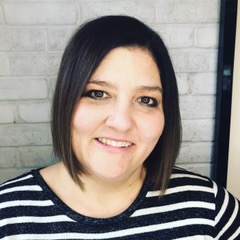 Kelly deVos is from Gilbert, Arizona, where she lives with her high school sweetheart husband, amazing teen daughter and superhero dog, Cocoa. She holds a B.A. in Creative Writing from Arizona State University. When not reading or writing, Kelly can typically be found with a mocha in hand, bingeing the latest TV shows and adding to her ever-growing sticker collection.
Kelly deVos is from Gilbert, Arizona, where she lives with her high school sweetheart husband, amazing teen daughter and superhero dog, Cocoa. She holds a B.A. in Creative Writing from Arizona State University. When not reading or writing, Kelly can typically be found with a mocha in hand, bingeing the latest TV shows and adding to her ever-growing sticker collection.
Her work has been featured in the New York Times as well as on Vulture, Salon, Bustle and SheKnows. Her debut novel, Fat Girl on a Plane, was named one of the “50 Best Summer Reads of All Time” by Reader’s Digest magazine.
Learn more about deVos on her website. You can also follow her on Twitter, on Instagram, and on Facebook. You can also learn more about her work on Goodreads. You can purchase Eat Your Heart Out from Amazon, B&N, Indiebound or wherever books are sold.
by Elisa Zied | Aug 22, 2021 | books, fiction
In 2019, I had the pleasure of doing a Q & A with novelist Laura Sibson about her writing life and beautiful debut novel, The Art of Breaking Things. A fan of hers and her wonderful work, I was excited to learn about her sophomore novel, Edie in Between (Viking Books for Young Readers, August 24, 2021). Here’s a description from Sibson’s website:
A modern-day Practical Magic about love, loss, and embracing the mystical.
It’s been one year since Edie’s mother died. But her ghost has never left.
According to her GG, it’s tradition that the dead of the Mitchell family linger with the living. It’s just as much a part of a Mitchell’s life as brewing healing remedies or talking to plants. But Edie, whose pain over losing her mother is still fresh, has no interest in her family’s legacy as local “witches.”
When her mother’s teenage journal tumbles into her life, her family’s mystical inheritance becomes once and for all too hard to ignore. It takes Edie on a scavenger hunt to find objects that once belonged to her mother, each one imbued with a different memory. Every time she touches one of these talismans, it whisks her to another entry inside the journal–where she watches her teenage mom mourn, love, and hope just as Edie herself is now doing.
But as Edie discovers, there’s a dark secret behind her family’s practice that she’s unwittingly released. She’ll have to embrace–and master–the magic she’s always rejected…before it consumes her.
Tinged with a sweet romance with the spellbinding Rhia, who works at the local occult shop, Edie in Between delivers all the cozy magic a budding young witch finding her way in the world needs.
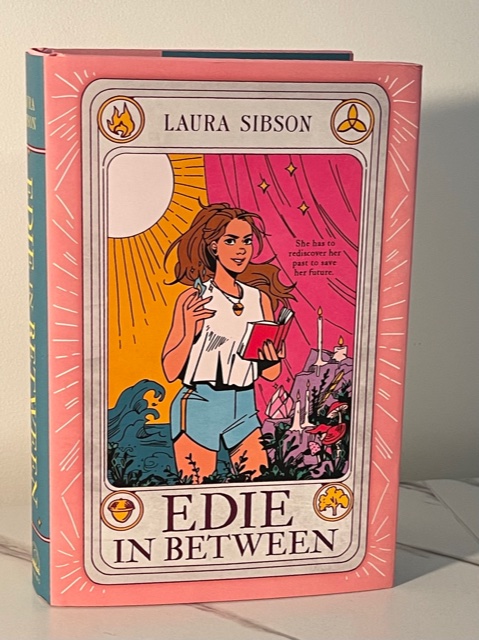 Sibson and I recently reconnected about her writing life and latest work. Here are the highlights.
Sibson and I recently reconnected about her writing life and latest work. Here are the highlights.
What has been the best part of becoming a published author with your debut novel, The Art of Breaking Things (Viking Books for Young Readers, 2019)?
The best part of being published is having the opportunity to interact with readers – either in real life at book events or through email – and hearing that your book affected them in some way. The other aspect of being published for which I’m very grateful is the doors it’s opened for me to lead workshops at The Highlights Foundation and to teach writing at the university level, both of which have been long-held dreams for me.
Was the process of writing your sophomore novel, Edie in Between, very different than that for your debut? If so, how?
The process of writing a second novel on deadline is night and day from the process of writing a first novel on your own schedule. For The Art of Breaking Things, I had years to work on the prose and the plot. I shared that manuscript with several trusted readers more than once. Edie In Between, on the other hand, was crafted through collaboration with my editor at Viking, Maggie Rosenthal. I threw some ideas at her, she came back and suggested I merge two of the ideas and the current version of Edie was born. I wrote a skinny first draft, then after receiving global revision notes from Maggie, threw out half of the draft and wrote even more. Maggie was instrumental in guiding me toward infusing the story with more magic and inspiring me to increase the stakes. I love the story that has resulted and I’m so grateful to work with an editor who has such a keen eye and is so skilled at her job.
I’m intrigued by the cover of Edie in Between. It’s so retro! Can you tell us the thought behind it?
The book is about a young witch who is reluctant to take on her power. In the book she meets a girl at an occult shop who reads tarot and helps Edie learn to wield (and accept) her magic. (Spoiler alert: there are sparks of attraction!) The design team wanted to pull in that tarot card sensibility for the cover, so they commissioned Lisa Sterle, who created the Modern Witch Tarot (among many amazing things) to create an image for the cover. And it’s perfect! While the book deals with parental loss, it’s also a fun story of friendship, magic, and adventure. This cover captures all those elements.
What personal experiences inspired this novel?
There are several elements in Edie In Between that stem from real life. First, the grief narrative was inspired many years ago when I wondered what it was like for my mother to have lost her father when she was just eighteen years old. That original story, which was my creative thesis at VCFA, was a contemporary realistic story of a girl who is navigating grief in an unusual way. The family name of the witches, Mitchell, is my mother-in-law’s maiden name. We lost her in 2014, so using that name is my way of paying tribute to her. Also, the setting of this final incarnation comes from my life. Cedar Branch is a fictionalized version of a place on the Chesapeake where I camped with my family when I was a kid. I have the best memories of crabbing and learning to paddle a canoe and swimming in the river. And finally, our younger child, who is 21, came out as transgender while I was drafting this story which inspired me to use Edie’s reluctance around magic as a metaphor for acceptance and claiming your full self.
How has the pandemic affected your reading/writing life?
I wrote like crazy while on deadline, but now that I don’t have an editorial deadline, I confess that diving into the drafting process has been more challenging than I’d like. As for reading, initially when the pandemic hit, it seemed that I couldn’t read anything longer than a news article. But I’ve gotten beyond that and have been reading a lot lately. Partly out of necessity. I’m teaching a college-level writing course this fall so I needed to read widely to select books to assign. (And there’s VCFA rep on that list! I’ve included Nora Carpenter’s Rural Voices Anthology as well as Varian Johnson’s Twins.) I’m also moderating a virtual YA rom-com panel for Salem Lit Fest in September, so I’m reading the panelists’ books as well.
As writers, we’re always studying, learning, and focusing on the craft of writing. How have you been able to maintain/guard your writing time while handling the rigors of the business (which includes engaging in social media, doing events, etc.)?
I find that it all comes in fits and starts. At the moment, I’m very focused on promoting Edie In Between so drafting my next novel is taking a back seat for a few weeks. But I’m also developing the syllabus for the course I’m teaching, and I do volunteer work as well. I find that the social media aspect of promoting a book could take up the entire day if you allow it. I set specific amounts of time for social media and then I use Freedom to limit access to those sites while I’m working on the course or the new writing project.
How do you generate ideas for future novels (if that’s something you are pursuing), and what do you do with those ideas once you have them?
When an idea lights upon me, maybe through a conversation with someone or a news story or walk in the woods, I’ll generally start writing what comes to mind to evaluate if the idea has legs. Many sparks don’t go anywhere. The ones that keep my interest or seem to have possibility, I’ll continue drafting as scenes come to me. Eventually, I get to a place where I need to stand back and see what I’ve got and figure out how to move forward. Usually is this around the 20k words mark. I’ll start to create a loose plot and keep going from there.
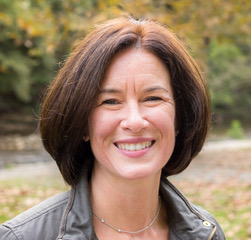 What’s your writing routine during drafting and/or revision?
What’s your writing routine during drafting and/or revision?
Now that meeting in coffee shops to write isn’t really feasible, I’m fortunate to have a room on the third floor of our old Victorian home where I can work. My desk is perched before a set of windows that look out over the big magnolia in our front yard. I usually put in some ear buds, make sure I’ve got plenty of fresh coffee, turn on the Freedom app and dive into the writing. Having said that, I can’t sit still for long periods of time, so I’ll get up to walk around every hour or two.
What writing tools/resources would you not want to live without?
Scrivener. I still believe that I would not be able to draft a novel without it. My brain gets overwhelmed when drafting in a word document, partly because I tend to draft out of order. I’ve also become increasingly reliant on my white board for plotting.
Any tips for aspiring novelists just getting started on their writing and/or publishing journey?
Finish the thing. That is the best advice I can give because it’s really all the advice wrapped up in one short sentence. Finish the thing means don’t give up on yourself or your story. It’s also intensely practical because you cannot query agents until you have a completed manuscript. Many, many people start, but never finish. You’ve got to finish if you want to be published.
What makes you want to keep writing?
To be frank, I don’t think I could not write at this point. I get grouchy and irritable when I’m not working on a new story. Even when the world of publishing feels tough and I wonder if I want to keep going, a character or a setting or a situation calls to me and back into the writing cave I go.
Check out reviews of Edie in Between by Kirkus and Publishers Weekly. You can also learn more about Laura and her work by visiting her website.
Edie in Between is available at AMAZON, BARNES & NOBLE, INDIEBOUND and BAM.
About Laura Sibson: After a career in undergraduate counseling, Laura Sibson pursued an MFA from Vermont College of Fine Arts. When she’s not writing in a local coffee shop, you can find her running the neighborhood streets or hiking with her dog. She lives in Philadelphia with her husband and their two sons. Laura is available for school visits, book clubs, workshops and conferences. She can speak on the process of writing and publishing to audiences from middle school into adulthood. With her background in one-on-one counseling, giving presentations and facilitating both panels and writing groups, Laura brings both warmth and professionalism to all of her endeavors.
by Elisa Zied | Jul 25, 2021 | books, fiction, graduate school, MFA, writer, writers, writing, young adult books
Full disclosure: Emma Kress is my dear friend. During our MFA studies, my Revisionary cohort at Vermont College of Fine Arts was lucky enough to adopt her (though we all respected the fact that we’d forever have to share her with the Tropebusters). Despite my obvious bias, this teacher and writer can only be described as a force, both as a human and a novelist. She has a lot to say and says it all with heart and hope and humor. Her powerful debut novel, Dangerous Play (Roaring Brook Press, August 3, 2021), more than proves that.
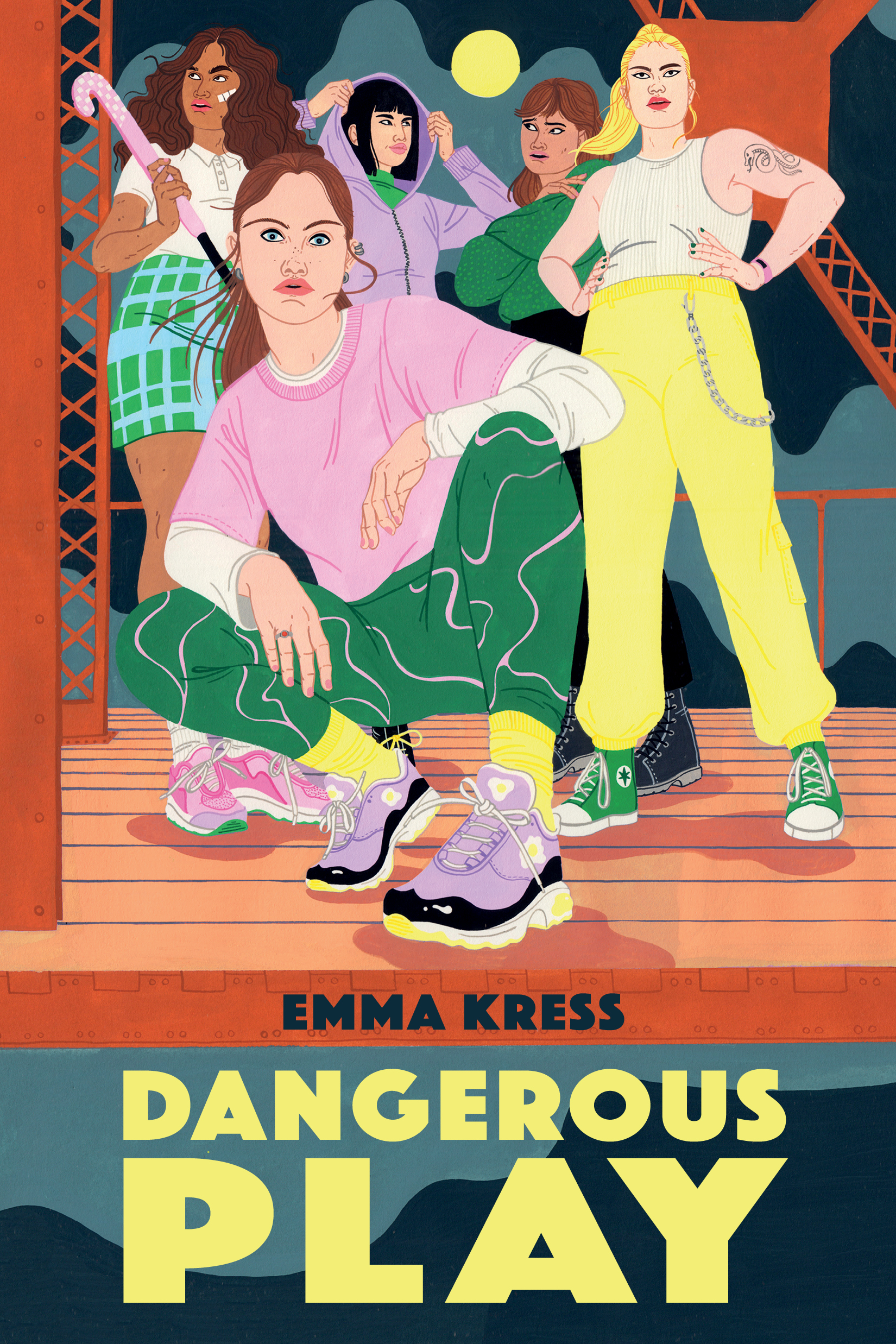 Described by Kirkus as “[A] contemporary feminist debut. . . . A timely and absorbing character study of a sexual assault survivor,” and by Corey Ann Haydu, author of Ever Cursed, as “Vibrant, daring, and deep, Dangerous Play is both a thrilling ride and a profound exploration of female friendship, rape culture, and the difficulty of doing the right thing in a world built on wrongs. An unflinching and empowering debut,” the novel is a timely, gripping and thought-provoking must-read for teens.
Described by Kirkus as “[A] contemporary feminist debut. . . . A timely and absorbing character study of a sexual assault survivor,” and by Corey Ann Haydu, author of Ever Cursed, as “Vibrant, daring, and deep, Dangerous Play is both a thrilling ride and a profound exploration of female friendship, rape culture, and the difficulty of doing the right thing in a world built on wrongs. An unflinching and empowering debut,” the novel is a timely, gripping and thought-provoking must-read for teens.
Here’s a brief description of the novel from Emma’s website:
Zoe Alamandar has one goal: win the State Field Hockey Championships and earn a scholarship that will get her the hell out of Central New York. She and her co-captain Ava Cervantes have assembled a fierce team of dedicated girls who will work hard and play by the rules.
But after Zoe is sexually assaulted at a party, she finds a new goal: make sure no girl feels unsafe again. Zoe and her teammates decide to stop playing by the rules and take justice into their own hands. Soon, their suburban town has a team of superheroes meting out punishments. But one night of vigilantism may cost Zoe her team, the championship, her scholarship, and her future.
I had the pleasure of doing an email Q and A with Emma about the novel and her writing life. Here are the highlights:
When did you know you were a writer, and at what point did you decide you’d write for children and young adults?
I’ve wanted to be a writer since I was ten but it took me until 2010 to take my writing seriously and commit to a daily practice. Writing for children and young adults was a natural choice as I was a teacher, surrounded by both children and children’s literature. At the start of my teaching career, I taught 5th grade and started a few middle-grade books. By the time I was writing seriously, I was teaching teens and reading a lot of YA fiction. But it was more than proximity, I think, that drew me to write for children and young adults. I think it was the same thing that drew me to teaching children and teens: our society underestimates kids, trivializes their concerns, and romanticizes their experience, all while exerting a lot of control over their existence. As a result, giving space on the page to teens and children is a radical act of resistance. And, most of my favorite stories center around change and power. I don’t think there’s any period of life that hits those more than childhood and adolescence.
What’s the greatest source of joy and fun for you when it comes to your writing life?
I love to learn and grow and writing offers a great path to both. I love figuring out the way the world or people work, though the eyes of my characters. I love the way a character can surprise me even though, technically, I’m the one doing the writing. I love the way at some point during the writing process I recognize some deep psychological struggle and get to say, “oh, that’s what you’re about.” Writing for me is like how running is for my husband—it keeps me steady, it keeps me sane. And, um, I don’t even need to sweat.

How has teaching fed into your creative life/process?
I think my love of teaching and the kids I’ve taught has been very helpful in terms of character voice and dialogue. I also feel very present in that time of life. I don’t have to rely on my memories as a teen when students are so ready to say, “you’ll never believe what just happened in the hall.” As a result, I think my stories feel authentic and of this moment. But I also think my commitment to honoring the voices and experiences of children and teens as a teacher is the same thing that drives me as a writer. As I said earlier, I think it is a radical act of resistance to listen to and honor children and teens.
How did getting your MFA at VCFA change your life (writing and otherwise)?
I could wax poetic about all that I love about VCFA for yeeears. VCFA gave me so many tools to improve my writing. As a result, I’m so much better at story structure, character development, side writing, and precision. But my time at VCFA was so much more for me than just a Home Depot for writing tools. VCFA emboldened me to experiment with new genres and audiences. VCFA fed my confidence and helped me pinpoint my strengths while shoring up my weaknesses. And I was actually shocked by the close-knit community. The alums I’d spoke to before I went all talked about it, but somehow, I didn’t think it would apply to me. Wow, I was wrong. It’s such a powerful network of talented and beautiful humans. I’d never been a part of an institution that was built on the twin pillars of compassion and creativity. As a teacher and former administrator, it was incredible to see that in action.
What are three tools you’ve used or created to help draft your novels?
My three biggest tools that I’m obsessed with right now:
- side writing
- working out problems with fat markers on big chart paper
- graph paper spreadsheets (not on the computer)
(For me, a big way to solve problems is often to step away from the manuscript and get off of the computer.)
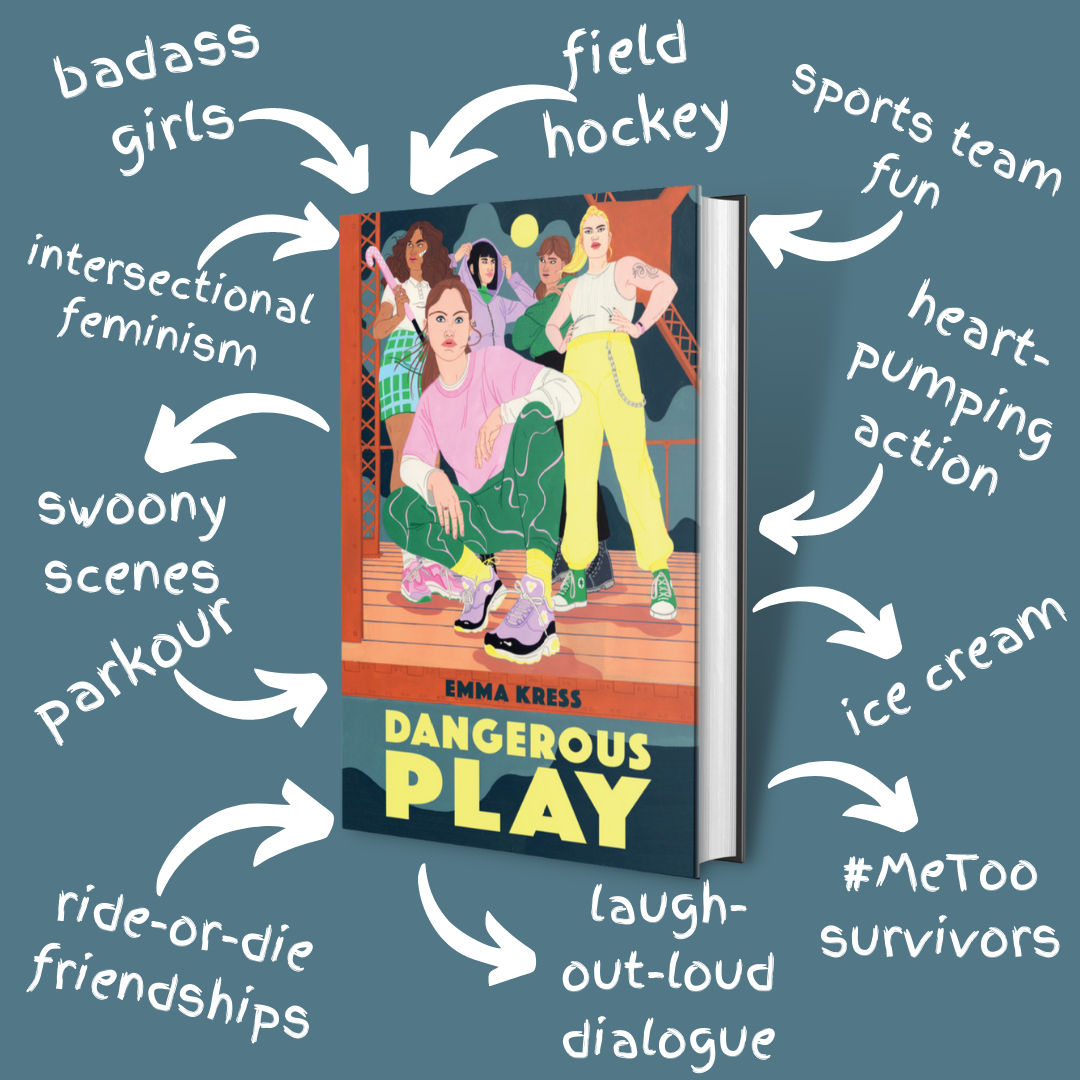 What was the spark that led to Dangerous Play, why was it important for you to write this particular story, and what did the process from spark to book look like?
What was the spark that led to Dangerous Play, why was it important for you to write this particular story, and what did the process from spark to book look like?
Dangerous Play is about the captain of a girls’ field hockey team. When she’s sexually assaulted, her ride-or-die team turn into vigilantes…but it might cost them everything.
This team of fierce, hyper-athletic, determined girls showed up when I was in the middle of writing something else. I told them to go away, but they didn’t listen. Even though they showed up sudden and loud, I had been thinking about some of book’s components for some time. For instance, I’d long noticed a gap in YA literature. While there were powerful books that followed a survivor’s journey, I didn’t see any books about rape culture overall. I’d also never seen a book about girls’ sports and the kinds of friendships that can happen on an intense, competitive girls’ team. I started writing Dangerous Play back in 2014. Thankfully, now there are books like Moxie, which address rape culture. And while there are more books featuring athletic girls (like 2021 debuts In the Same Boat, by Holly Green, and The Knockout, by Sajni Patel) there are few that feature full teams. As a result, I was thrilled when the girls of Dangerous Play showed up, filling a need I’d had for a long time. In many ways, this was the book I needed both when I was a teen, and as an adult.
Where do you like to write?
I used to like to write here, surrounded by books. And yet, thanks to the pandemic and everyone in my family in virtual school or working from home, I’m now squeezed in between my bed and the window on a folding table. But while it’s not as pretty, being able to shut my bedroom door is EVERYTHING.
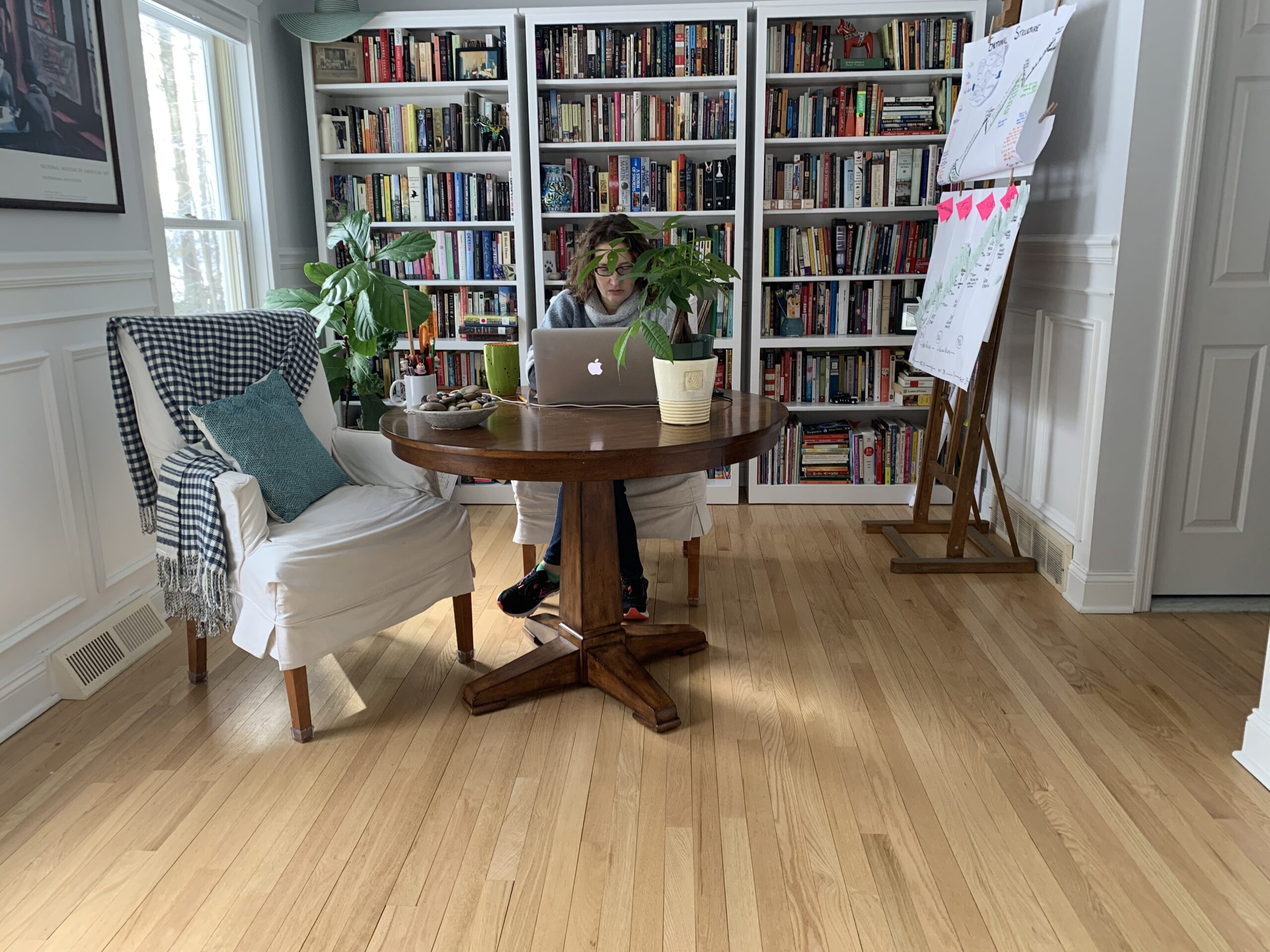

 What’s the best thing about transitioning from writer to debut author?
What’s the best thing about transitioning from writer to debut author?
EK: I’ve been thinking a lot about that old version of me—that 10-year-old girl—who wanted more than anything to be a published author. It’s a surreal and incredible thing to be able to give her this gift. How many people get to do that? It feels like a true privilege. And I think the gift feels all the bigger because of how long it took for me.
What’s the most challenging thing about transitioning from writer to debut author?
Every day I’m learning something new. Which in many ways is wonderful, because luckily I like to learn new things. But the learning curve is steep. It’s a bit daunting and tiring to be standing at the foot of yet another learning mountain on a near daily basis. Part of that is the debut year. But part of that is debuting in a pandemic. So even if I ask my mentors who are more experienced for advice or insight, none of them debuted in a pandemic so it makes things a bit more interesting for us pandemic debuters. Thankfully the kidlit community is the most inclusive and supportive of which I’ve ever been a part—so we’re weathering this together.
Please share any advice that’s helped you best (from others or yourself) in your kidlit career?
I think A LOT about my boat and I recommend every writer get themselves a boat. Inside my boat are the things I can control: honing my writing craft, how much I dedicate to my writing, how vulnerable I am on the page, getting the words on the page, teaching my kids to clap when I finish a draft. Literally everything else is outside my boat: book deals, reviews, lists, other people’s opinions, whether my kids actually clap, etc. It’s so helpful to train your focus inside your boat. In publishing, there are a lot of shiny somethings, lots of ego catnip, lots of opportunities to, as one writer friend likes to say, “compare and despair.” Retraining our focus to be inside our boat must be a habitual and intentional act. Let craft and our enjoyment of it be our unwavering center.
Hope Sparkers–what are they, and where can people get some?
I love that you asked! As you know, I’ve done a lot of research on hope and how helpful it can be for writers for children and young adults to incorporate hope as part of their writer’s toolkit. I made up the term “Hope Sparkler” to refer to all the things that I believe give us hope: friends/family/inspirational leaders in your community; religion/ philosophy/ belief system/ faith in ruling bodies; your own positive characteristics (creativity, humor, optimism, gratitude etc.); passion/talents (baking, gardening); place; and, of course, books. Books not only can contain hope sparklers but they can be them in their own right. If there’s anything we learned during this last year, it’s that we need as many hope sparklers as we can get. We need them to light our way during those dark days. And children need them most of all.
Where can writers and educators access your awesome Instagram videos for use in their practice or classroom?
Oh my gosh, these videos have been such a gift to me as well. Every single writer I’ve interviewed has offered such wisdom and inspiration. With the exception of one long-form video, all videos are about 15-minutes and packed with craft. At this point, there are thirty-six videos and you can find them all on my IGTV. I plan to offer these again during this year’s NaNoWriMo. I love any opportunity to blend my love of teaching and writing!
What’s on the horizon for Emma Kress?
I’m busy revising what I hope will be my second book—also a contemporary stand-alone YA. Like Dangerous Play, you can expect it to be feminist, funny, and fierce. On August 3rd, I’ll have a virtual launch with the great Nova Ren Suma along with several other upcoming launch events and writing workshops. I offer one general and one writing-focused newsletter every month (sign up here: https://www.emmakress.com/contact ). I’m also very active on all my social media. I look forward to connecting with all of you.
Some other mentions of Emma Kress and Dangerous Play to check out: A review on Publishers Weekly, a craft lesson on writing about sports on Kid Lit Craft.
Emma Kress is a long-time educator and 2014 finalist for NY State Teacher of the Year. She’s a graduate of Vassar College, Columbia University’s Teachers College, and the MFA program in Writing for Children and Young Adults at Vermont College of Fine Arts. She lives with her family in Saratoga Springs, NY. Dangerous Play is her debut novel. Learn more about Emma Kress and her amazing work on her website and on Instagram, Twitter, Facebook and TikTok.
 In what ways has your writing process and daily practice changed since writing your debut novel, The Library of Lost Things?
In what ways has your writing process and daily practice changed since writing your debut novel, The Library of Lost Things? You dive deep into the ocean (pun intended), medicine, opera, becoming a Navy SEAL, and so much more in your novel. What did you know about each of these ahead of time, and what kind of research did you have to do before/while writing WWWT?
You dive deep into the ocean (pun intended), medicine, opera, becoming a Navy SEAL, and so much more in your novel. What did you know about each of these ahead of time, and what kind of research did you have to do before/while writing WWWT?  What was the best part about having your sophomore novel, A Cuban Girl’s Guide to Tea and Tomorrow, become a Reese’s YA Book Club pick—and a New York Times bestseller?
What was the best part about having your sophomore novel, A Cuban Girl’s Guide to Tea and Tomorrow, become a Reese’s YA Book Club pick—and a New York Times bestseller?
 No one knew just how bad Joey Ward’s addiction was until the night Candy MontClaire died. Four months later, he’s back from rehab, hoping for a fresh start in a town that doesn’t know how to forgive. His sister, Emory, is tasked as his keeper. Because in a family with a “beautiful one” (her glamorous and outgoing older sister Maddie) and a “bad one” (Joey), Emmy has always been “the good one.” Of course she’ll keep her brother safe. She loves Joey more than anything. She’ll do anything to keep him alive.
No one knew just how bad Joey Ward’s addiction was until the night Candy MontClaire died. Four months later, he’s back from rehab, hoping for a fresh start in a town that doesn’t know how to forgive. His sister, Emory, is tasked as his keeper. Because in a family with a “beautiful one” (her glamorous and outgoing older sister Maddie) and a “bad one” (Joey), Emmy has always been “the good one.” Of course she’ll keep her brother safe. She loves Joey more than anything. She’ll do anything to keep him alive. What has been the most rewarding part of being a young adult novelist? What has been the most challenging part?
What has been the most rewarding part of being a young adult novelist? What has been the most challenging part? I’ve been following author Kelly DeVos’s career and enjoying her work and social media posts for years. I even had the pleasure of meeting the young adult writer at a pre-pandemic
I’ve been following author Kelly DeVos’s career and enjoying her work and social media posts for years. I even had the pleasure of meeting the young adult writer at a pre-pandemic  How has the pandemic impacted your writing, and how do you balance that with book promotion?
How has the pandemic impacted your writing, and how do you balance that with book promotion?  Kelly deVos is from Gilbert, Arizona, where she lives with her high school sweetheart husband, amazing teen daughter and superhero dog, Cocoa. She holds a B.A. in Creative Writing from Arizona State University. When not reading or writing, Kelly can typically be found with a mocha in hand, bingeing the latest TV shows and adding to her ever-growing sticker collection.
Kelly deVos is from Gilbert, Arizona, where she lives with her high school sweetheart husband, amazing teen daughter and superhero dog, Cocoa. She holds a B.A. in Creative Writing from Arizona State University. When not reading or writing, Kelly can typically be found with a mocha in hand, bingeing the latest TV shows and adding to her ever-growing sticker collection. Sibson and I recently reconnected about her writing life and latest work. Here are the highlights.
Sibson and I recently reconnected about her writing life and latest work. Here are the highlights. What’s your writing routine during drafting and/or revision?
What’s your writing routine during drafting and/or revision? Described by
Described by 
 What was the spark that led to Dangerous Play, why was it important for you to write this particular story, and what did the process from spark to book look like?
What was the spark that led to Dangerous Play, why was it important for you to write this particular story, and what did the process from spark to book look like?

 What’s the best thing about transitioning from writer to debut author?
What’s the best thing about transitioning from writer to debut author?
Recent Comments